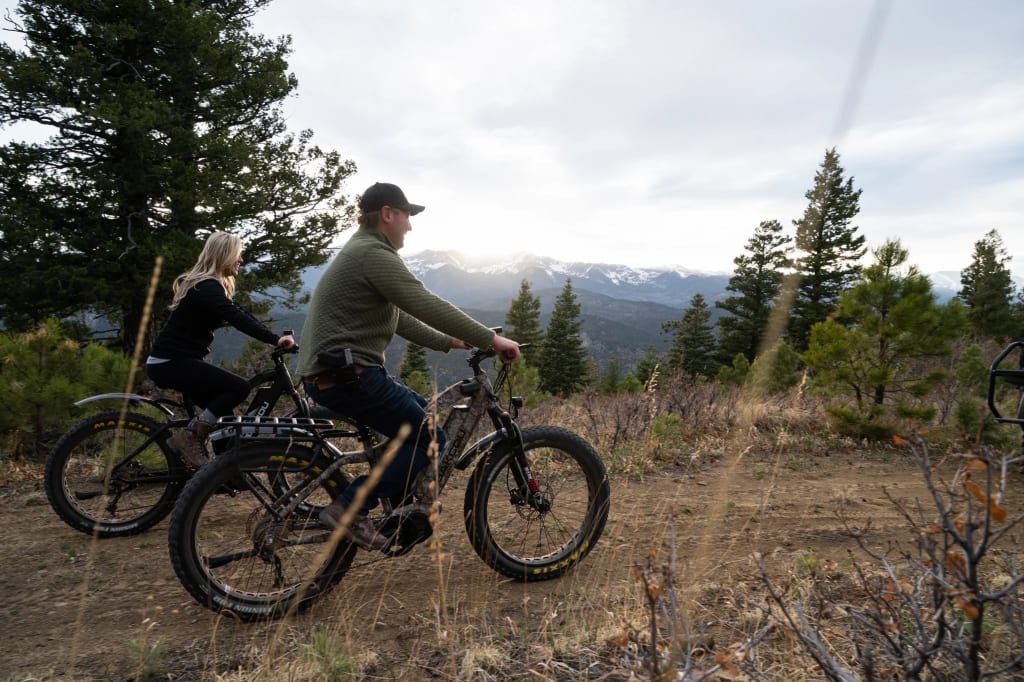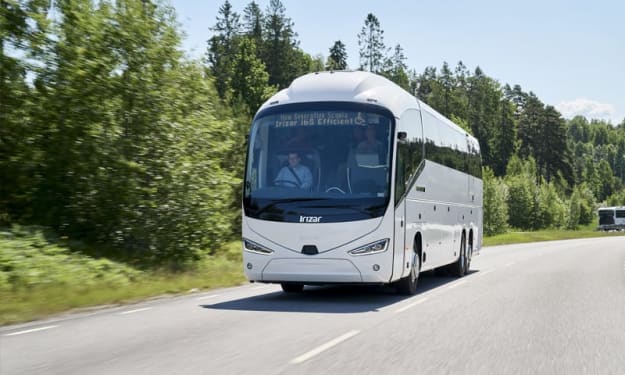What is the difference between a hardtail and a Softail mountain bike?
The suspension fork at the front of the bike is designed to absorb impacts from rough terrain, improving the rider's comfort and control. This makes hardtail bikes a good choice for riders who want a fast, efficient, and responsive ride on smooth to moderately rough terrain, such as cross-country trails, dirt roads, and light singletrack.

A hardtail bike is a type of mountain bike that features a suspension fork at the front of the bike, but no suspension in the rear. Instead, the frame is rigid, hence the name "hardtail".
The suspension fork at the front of the bike is designed to absorb impacts from rough terrain, improving the rider's comfort and control. This makes hardtail bikes a good choice for riders who want a fast, efficient, and responsive ride on smooth to moderately rough terrain, such as cross-country trails, dirt roads, and light singletrack.
Compared to full-suspension bikes, hardtail bikes tend to be lighter, simpler, and more affordable. They also tend to be more efficient, as less of the rider's pedal power is absorbed by the suspension, resulting in more power going to the wheels. This makes hardtail bikes a popular choice for cross-country racers and riders who prioritize speed and efficiency over comfort and technical ability.
However, on more technical or rocky terrain, full-suspension bikes can offer better traction, control, and comfort, making them a better choice for many riders. Ultimately, the choice between a hardtail and full-suspension bike will depend on a rider's individual preferences, riding style, and the type of terrain they plan to ride on.
A "softail" mountain bike is a type of mountain bike that is designed with a small amount of rear suspension. This is in contrast to "hardtail" mountain bikes, which have no rear suspension.
Softail bikes have a suspension system that is designed to absorb small bumps and vibrations while still maintaining a relatively stiff frame. This can provide a smoother and more comfortable ride than a hardtail bike, while still maintaining some of the efficiency and simplicity of a hardtail.
However, the amount of suspension on a softail bike is typically less than what is found on a full suspension bike, so softail bikes may not be as well suited to extremely technical terrain or larger jumps as full suspension bikes.
Softail bikes are relatively rare in the mountain bicycle world, with only a few manufacturers producing them. They can be a good choice for riders who want a little more comfort and control than a hardtail bike, but don't want the added weight, complexity, or cost of a full suspension bike.
The main difference between a hardtail and softail mountain bike is the amount of suspension they have. A hardtail mountain bike has a suspension fork at the front of the bike, but no suspension in the rear, while a softail mountain bike has a small amount of rear suspension.
Here are some of the key differences between hardtail and softail mountain bikes:
Suspension: As mentioned, the main difference is the amount of suspension. Hardtail bikes have a suspension fork at the front of the bike, which can absorb impacts from rough terrain, while softail bikes have a small amount of suspension in the rear that is designed to absorb small bumps and vibrations.
Also read: Best Bike Frame Adapter
Efficiency: Because a hardtail bike has no suspension in the rear, it tends to be more efficient than a softail bike. This is because there is no suspension to absorb the rider's pedaling power. Softail bikes are slightly less efficient because some of the rider's energy is absorbed by the suspension.
Comfort: Softail bikes tend to be more comfortable than hardtail bikes, as the small amount of rear suspension can help absorb bumps and vibrations. However, full-suspension bikes tend to be the most comfortable overall.
Weight: Because softail bikes have a small amount of rear suspension, they tend to be slightly heavier than hardtail bikes. However, the weight difference is usually not significant.
Terrain: Hardtail bikes are well-suited to cross-country riding and smoother singletrack, while softail bikes can handle slightly more technical terrain. However, full-suspension bikes are the best choice for very technical terrain.
Ultimately, the choice between a hardtail and softail bike will depend on a rider's individual preferences, riding style, and the type of terrain they plan to ride on.
Also read: 10 best mountain bike tire brands
There are several advantages and disadvantages to riding a hardtail mountain bike. Here are a few:
Advantages:
1. Efficiency: Because hardtail bikes have no rear suspension, they tend to be more efficient than full-suspension bikes. This means that more of the rider's power is transferred to the pedals, which can make hardtail bikes faster and more responsive.
2. Price: Hardtail bikes are typically less expensive than full-suspension bikes. This is because they have fewer moving parts and require less engineering to produce.
3. Maintenance: Because hardtail bikes have fewer moving parts, they require less maintenance than full-suspension bikes. This can make them a good choice for riders who want a bike that is easy to take care of.
4. Lightweight: Hardtail bikes are typically lighter than full-suspension bikes. This can make them easier to handle and more responsive.
Disadvantages:
1. Rough Ride: Hardtail bikes can provide a rougher ride than full-suspension bikes, especially on technical terrain. This is because there is no rear suspension to absorb impacts.
2. Limited Terrain: Hardtail bikes are best suited to smoother trails and cross-country riding. They are not as well-suited to very technical terrain or larger jumps as full-suspension bikes.
3. Comfort: Because hardtail bikes have no rear suspension, they can be less comfortable than full-suspension bikes, especially on longer rides.
4. Handling: Hardtail bikes can be more difficult to handle than full-suspension bikes on very technical terrain. This is because they provide less traction and control than full-suspension bikes.
Ultimately, the choice between a hardtail and full-suspension bike will depend on a rider's individual preferences, riding style, and the type of terrain they plan to ride on.
There are several advantages and disadvantages to riding a softail mountain bike. Here are a few:
Advantages:
1. Comfort: Softail bikes provide a smoother ride than hardtail bikes, as the small amount of rear suspension can help absorb bumps and vibrations. This can make them more comfortable, especially on longer rides.
2. Traction: Softail bikes tend to provide better traction than hardtail bikes, as the small amount of rear suspension can help keep the rear wheel in contact with the ground. This can make them better suited to technical terrain.
3. Versatility: Softail bikes can be used for a wide range of riding styles, from cross-country to all-mountain riding. They can handle technical terrain better than hardtail bikes, but are still lighter and more efficient than full-suspension bikes.
4. Handling: Softail bikes can be more responsive and easier to handle than full-suspension bikes, especially on smoother trails. This can make them a good choice for riders who want a bike that is easy to control.
Disadvantages:
1. Efficiency: Softail bikes are typically less efficient than hardtail bikes, as some of the rider's energy is absorbed by the suspension. This can make them slower and less responsive.
2. Weight: Softail bikes are typically heavier than hardtail bikes, as they have a small amount of rear suspension. This can make them more difficult to handle, especially on technical terrain.
3. Maintenance: Softail bikes require more maintenance than hardtail bikes, as they have more moving parts. This can make them more expensive to maintain.
4. Price: Softail bikes are typically more expensive than hardtail bikes, as they require more engineering to produce.
Ultimately, the choice between a softail and hardtail bike will depend on a rider's individual preferences, riding style, and the type of terrain they plan to ride on. Softail bikes are best suited to riders who want a bike that can handle technical terrain, but still offers a comfortable ride.
About the Creator
Mustafa Sakib
I'm a digital marketer and SEO expert. Blogging is my passion. I love to share my thoughts and ideas, read books and blogs, travel, play cricket. You are always welcome to read my blog.
Enjoyed the story? Support the Creator.
Subscribe for free to receive all their stories in your feed. You could also pledge your support or give them a one-off tip, letting them know you appreciate their work.






Comments
There are no comments for this story
Be the first to respond and start the conversation.